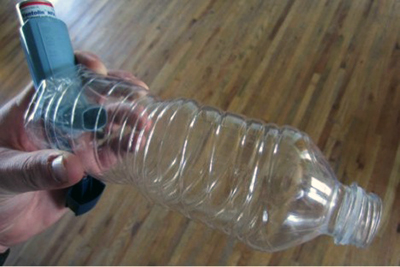It is a common practice in Jordan University of Science & Technology to have medical students circulating in other hospitals in Jordan. Our clinical teaching is not only done in the university hospital, but also in the government teaching hospitals. I remember on the first day of my clinical year, the dean told us that traveling from a hospital to another is also part of our training. I find teaching session in the peripheral hospital a lot more interesting and challenging due to the limited resources we have there, it all goes back to the essence of medicine, history taking and physical examination.
It was my first week in the Prince Rasheed Hospital for my pediatric rotation, a military hospital that serves the soldiers, policemen and their family members. That day, my group was assigned to be with Colonel K, the only pediatric specialist I have seen wearing a white coat on top of his military uniform. From bed to bed he would question us on signs and symptoms, treatment options and complications of diseases we saw during the ward round.
 As we met a patient who was newly diagnosed to have bronchial asthma, I heard him telling a mother to cut the 1.5 L water bottle into halves and stick the inhaler into the mouth of the water bottle and put the open end around the mouth of her son and have him inhale the medication from it.
As we met a patient who was newly diagnosed to have bronchial asthma, I heard him telling a mother to cut the 1.5 L water bottle into halves and stick the inhaler into the mouth of the water bottle and put the open end around the mouth of her son and have him inhale the medication from it.
Out of curiosity I asked him, “Doctor, are you telling the mother to make a spacer out of the water bottle?”
“Yes, why should you not? It’s cheap and easy. This patient is of low social class, they could not afford to buy the spacer. It will be 30 JDs at least. Remember, inhalers without spacer in children, is useless!”, he answered and moved on to the next patient.
It bothered me that I did not thought of the fact that my patient might not be able to afford a spacer. How could I have missed this? Maybe because I never took the time to ask around how much a spacer would cost, and how much money does this family make monthly, and does their health insurance cover the medications they would need. When I went home, a few days later, I wanted to give it a try and I started to search for a water bottle spacer. To my surprise, there are many variants of water bottle spacer, from the easiest; cutting it into two halves all the way, to the more complex version of using a utility knife and drillers. There are even studies, published in PubMED regarding the efficacy of these spacers!
It takes the brain to come up with the diagnosis and what drugs to prescribe for a patient, but it definitely takes the heart to remind us that this patient could not afford a spacer. Practicing in a facility where everything is accessible and available tends to make us forget that there will be circumstances in the future that will require us to get extra creative and innovative for the well-being of our patients.
This story is just one of many innovations we have, or will encounter in our clinical practice. Have you ever come across any other innovations in your training? Do share with us your experience so that we could all improvise for our patients, if needed.
This article is written by Nurul Atiqah, a 6th year student in Jordan University of Science and Technology. Click the Young Columnists tab under The Team to know about her.

Great article! Well done!
This article is a good reminder to all of us practising medicine that we should be a compassionate human being first and a doctor second. In our ‘excitement’ to treat and plan a management for our patient, oftentimes we do not try and put ourselves in their shoes, to try and understand how our plans affect their lives.
Just to share,the modified spacer also finds its use in a country like ours where there are parents who cannot afford to come up with RM70-80 for the aerochamber.
It always amazes me how a simple innovation can affect many in such a profound way.